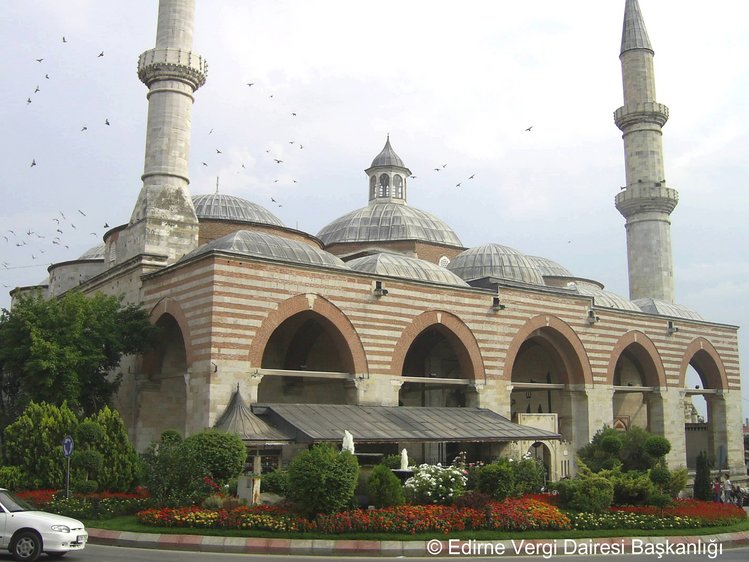 |
| Eski Cami interior |
 |
| Eski Cami, Edirne |
The Eski Cami was completed in 1414, probably a century after the time of Yunus, but when Ottoman Islam was still young and its architecture exuberant in intent but simple in engineering. Yunus spent little or no time in mosques and regarded ritual with benevolent amusement as a distraction from faith. But I think even he would not have felt uncomfortable in this quiet place with its dome beckoning like a gate to heaven.
| Selimiye Camii, Edirne (WikiCommons) |
Only a few hundred meters away stands the Selimiye Mosque, completed in 1575 and designed by Sultan Suleyman I's master architect, Koca Mimar ("Architect") Sinan, who was then 80 years old. He had designed many mosques including Istanbul's famous Süleymaniye, completed in 1558, as well as other large, graceful buildings. But Edirne is considered (and was so considered by the mimar himself) to be his finest and most perfected work. It is an engineering marvel, with an immense dome with a diameter of 31.30 meters whose center rises 43.28 meters above the floor. That enormous structure is supported by an ingenious system distributing the weight to its eight external pillars, with no pillars interrupting is prayer space 1,629 square meters. The booklet from the tourism offices further tells us that "the entire mosque covers an area of 2,475 m2, the largest in architectural history." The proportions are beautiful and its generous space inspires awe.
But if I were to spend a longer time in Edirne, it would be to the Eski Cami that I would come, perhaps to stand, perhaps to kneel, to meditate on our world and my joyous place in it. Yunus Emre said that of course we must believe in God because otherwise He would not exist — or, as I interpret him, God is our creation and must be respected and preserved as such. As a god-fearing atheist, I feel akin to that smiling, gentle poet. And in the Eski Cami of Edirne, I feel myself a kızıl dervişi—a red dervish.
1 comment:
A very interesting and graceful report. We just spent two weeks in Bali, which is not only a tropical paradise, but has a thought provoking and creative cuture. Maybe I'll get it together to write somethign about it.
Post a Comment